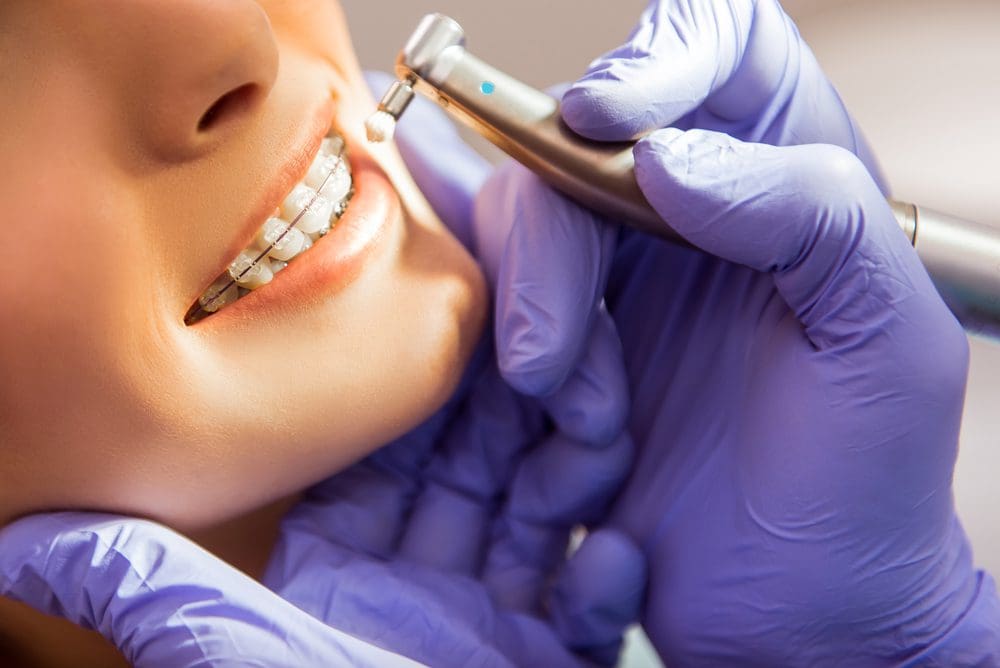Why Cumming Invisalign is the Perfect Option for a Discreet Orthodontic Option
Why Cumming Invisalign is the Perfect Option for a Discreet Orthodontic Option
Blog Article
Comprehensive Overview to Orthodontics Procedures for Correcting Oral Imbalances
Comprehending the ins and outs of each procedure, including their mechanisms, benefits, and possible disadvantages, is important in making informed choices concerning one's orthodontic therapy. As we navigate via the thorough guide to orthodontic procedures for dealing with oral imbalances, the elaborate information of each approach will unravel, dropping light on the path towards a harmonious and useful dental placement.
Orthodontic Procedures Introduction

Along with conventional dental braces and clear aligners, orthodontists might additionally advise various other interventions like headgear, palatal expanders, or retainers to resolve specific placement issues (invisalign). These treatments are tailored to each client's special needs and may entail a mix of therapies to achieve the preferred results. Regular modifications and tracking are essential parts of orthodontic therapy to make sure progress gets on track and to make any kind of essential alterations along the method. By undergoing orthodontic procedures, people can not only achieve a straighter grin however likewise enhance their overall dental health and wellness and function.
Traditional Braces: Just How They Function
When considering orthodontic treatments for dental imbalances, conventional dental braces stick out as a time-tested technique for correcting teeth placing. Traditional braces consist of braces, cords, and bands that function with each other to apply continuous pressure on the teeth, slowly relocating them into the desired alignment. The brackets are attached to the teeth making use of a special adhesive, and the wires are threaded through the brackets. By changing the tension of the wires, orthodontists can control the direction and force used to each tooth, guiding them into correct alignment over time.
One secret aspect of how traditional dental braces work is the process of bone remodeling. As pressure is put on the teeth through the braces, the bone surrounding the teeth is reshaped to support the new tooth settings. This improvement is crucial for the long-term stability of the remedied positioning. Clients will certainly need routine changes at the orthodontist's workplace to make certain the braces remain to use the appropriate pressure for reliable teeth activity.
Unnoticeable Aligners: Advantages And Disadvantages
These clear, personalized trays are essentially undetectable when put on, making them an appealing option for people seeking a much more cosmetically pleasing orthodontic therapy. Clients can eliminate the aligners internet prior to consuming or brushing their teeth, decreasing the threat of food obtaining stuck in the device and simplifying the cleansing procedure.

Surgical Orthodontic Options
Surgical interventions in orthodontics present viable alternatives for resolving intricate oral misalignments that may not be properly settled via traditional orthodontic treatments. While unnoticeable aligners and traditional dental braces can remedy lots of orthodontic issues, certain cases call for medical intervention to accomplish optimal results. Surgical helpful site orthodontic options are commonly suggested for extreme malocclusions, considerable jaw disparities, and situations where the underlying bone framework needs alteration to accomplish correct alignment.
One typical medical orthodontic treatment is orthognathic surgical treatment, which involves repositioning the jaws to deal with practical issues such as problem eating or speaking. This surgery is frequently executed in partnership with an orthodontist who aids straighten the teeth before and after the treatment. Surgical orthodontics may likewise include procedures to reveal affected teeth, remove excess gum cells, or reshape the jawbone to produce an extra harmonious facial account.
Prior to considering surgical orthodontic alternatives, clients undertake an extensive analysis to identify the need and potential benefits of such treatments. cumming orthodontics. While surgery may appear challenging, it can dramatically improve both the function and aesthetics of the smile in instances where standard orthodontic treatments drop short
Retainers and Post-Treatment Treatment

Post-treatment treatment entails adhering to the orthodontist's guidelines diligently. This might consist of correct dental hygiene methods, going to follow-up consultations, and putting on the retainers as suggested. Failing to follow post-treatment treatment guidelines can cause regression, where the teeth progressively relocate back in the direction of their initial positions. Consistent retainer wear, good oral hygiene, and regular dental examinations are necessary for keeping the outcomes attained via orthodontic surgery and ensuring the lasting security of the corrected dental positioning.
Verdict
In final thought, orthodontic treatments offer different alternatives for fixing oral misalignments. Surgical orthodontic options More Bonuses are offered for more extreme misalignments. In general, orthodontic procedures can successfully improve oral wellness and aesthetic appearance.
As we navigate through the extensive overview to orthodontic treatments for correcting dental imbalances, the detailed details of each method will certainly unravel, losing light on the path towards a unified and functional dental positioning. - invisalign
One of the most usual orthodontic therapies is the usage of dental braces, which consist of metal brackets and wires that use mild stress to progressively change teeth right into the wanted position.When thinking about orthodontic therapies for oral imbalances, typical dental braces stand out as a reliable approach for dealing with teeth placing. In addition, invisible aligners may not be suitable for complex orthodontic problems that need even more significant teeth movement, as they are normally advised for moderate to modest instances. Retainers are personalized orthodontic gadgets developed to hold teeth in their corrected settings after the completion of orthodontic treatment.
Report this page